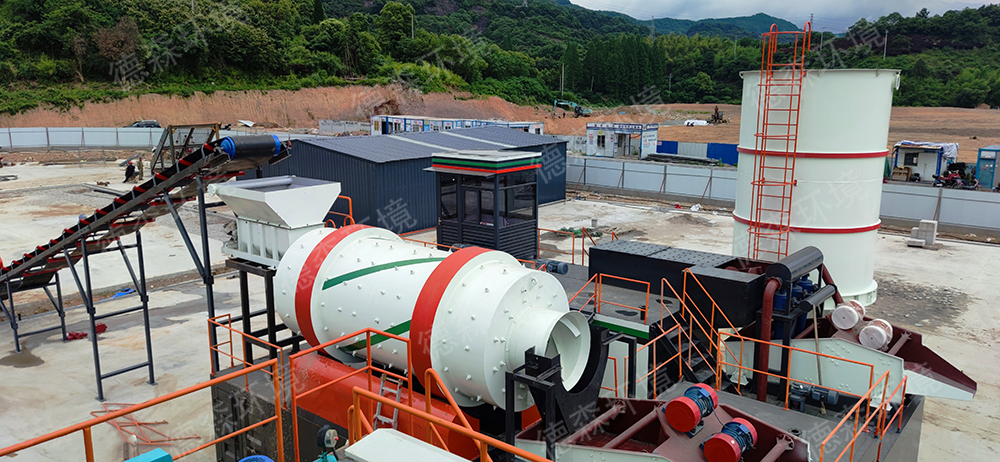Harm of Fukushima Nuclear Sewage to Soil Environment and How to Treat Nuclear Contaminated Soil?
Fukushima nuclear sewage in Japan is very harmful to the soil environment. After the nuclear accident, nuclear sewage is continuously discharged into the ocean, which will seep into the soil and cause serious impact on the ecological environment of the soil.First of all, the radioactive substances i
Fukushima nuclear sewage in Japan is very harmful to the soil environment. After the nuclear accident, nuclear sewage is continuously discharged into the ocean, which will seep into the soil and cause serious impact on the ecological environment of the soil.

First of all, the radioactive substances in the nuclear sewage will enter the groundwater through the pores in the soil, and then enter the plants through the roots of the plants, eventually affecting the biodiversity of the soil. The effects of radioactive substances on plants are mainly to cause slow growth of plants, wilting of leaves, and rot of roots and stems.
Secondly, the radioactive substances in the nuclear sewage will also affect the chemical properties of the soil. Radioactive materials can interact with minerals in the soil, leading to loss of nutrients in the soil, acidification of the soil, reduction in the number of microorganisms in the soil, and a decrease in the fertility of the soil.
In addition, nuclear sewage will also have an impact on the physical properties of the soil. Radioactive substances will destroy the granular structure of the soil, causing problems such as soil compaction and desertification, and affecting the soil's ability to retain water and fertilizer.
Therefore, we should attach great importance to the harm of Japan's Fukushima nuclear sewage to the soil environment, and take active and effective measures to strengthen the protection of the soil environment. First of all, we should strengthen the supervision of nuclear sewage discharge to prevent nuclear sewage from further polluting the soil; secondly, we should promote green planting technology, promote the application of organic fertilizers and microbial fertilizers, increase the organic matter content in the soil, and improve the quality of the soil. Physical and chemical properties; Finally, we should strengthen the monitoring and evaluation of the soil environment to discover and solve soil environmental problems in time.

Soil treatment of nuclear contamination is a very important and complicated work, the following are some treatment methods:
1. Physical method: including excavation, landfill, heat treatment, etc. Among them, excavation is to excavate polluted soil, landfill is to bury polluted soil underground, and heat treatment is to heat polluted soil to 600-900°C to remove harmful substances.
2. Chemical method: including cleaning, neutralization, oxidation, etc. Cleaning is to use chemical solvents to wash away harmful substances in polluted soil; neutralization is to use chemical substances to neutralize harmful substances to make them into harmless substances; oxidation is to use oxidants to oxidize harmful substances into harmless substances.
3. Electrochemical method: including electrolysis, electrophoresis, etc. Electrolysis is to use electric current to pass through the polluted soil, so that harmful substances undergo chemical reactions on the electrodes; electrophoresis is to put the polluted soil into the electrophoretic fluid, and use the effect of electric field to separate harmful substances.
4. Physical-chemical combined method: Combine physical and chemical methods to improve removal efficiency.
5. Microbial removal method: use microorganisms with the function of decomposing harmful substances to convert harmful substances into harmless substances.
6. Incineration method: heating the polluted soil to high temperature to oxidize and decompose harmful substances.
7. Super compression method: compress the polluted soil into blocks, reduce the volume, and facilitate handling and storage.
8. Soil nuclear pollution removal methods: such as shoveling for decontamination, deep plowing of foreign soil, peelable film, forest restoration, etc.
It should be noted that each treatment method has its advantages and limitations, and the appropriate treatment method should be selected according to the actual situation. At the same time, it is also very important to strengthen management, reduce nuclear pollution sources, strengthen the combination of existing treatment methods, develop new microbial treatment technologies and develop genetic engineering repair plants.

Desen soil washing equipment for soil pollution treatment can achieve the following effects:
1. Effectively remove pollutants in the soil, including heavy metals, organic matter, radioactive substances, etc.
2. It can clean the dirt and pollutants in the soil, and improve the permeability and penetration rate of the soil.
3. It can restore the fertility and growth ability of the soil, and ensure the yield and quality of crops.
4. It is friendly to the environment and will not produce secondary pollution.
5. The operation is simple, and it can quickly and effectively deal with large-area soil pollution problems.
It should be noted that soil washing equipment cannot completely solve the problem of soil pollution, it is only one of the treatment methods. When dealing with soil pollution, it is also necessary to consider various factors such as the type, concentration, soil type, and climatic conditions of pollutants, and to use a combination of methods to achieve better results.





